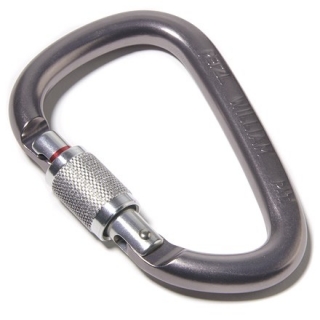Intro to Climbing
Are you a double-black-diamond skier? Perhaps you enjoy paddling through Class V rapids? A lot of outdoor activities that require some level of commitment have their own ratings system. They exist to give you an idea of how tough a challenge will be, or if you should even attempt a certain route given your experience and skill level. Mountaineering, in general, has several ratings systems and it gives me a good road map for describing the big picture of modern climbing.To put things in proper perspective, climbing wasn't always a sport by definition. Up until the late 1800s, climbing was done out of necessity: traveling, exploring, mapping, etc. Towards the end of the 19th century, a few Europeans started climbing as a pastime unto itself. Since then, climbing has exploded into a very popular sport. With so many people climbing, it makes sense that we should give each climb a rating of relative difficulty.
While there are many different systems for rating a hiking path or climbing route, in North America, we stick to a system not unlike the library's old Dewey Decimal System. We call it the Yosemite Decimal System (or "YDS" for short). YDS does a pretty good job of rating just about every method we use to get to the top of a mountain (unless you take a helicopter or anything motorized). There are three rating categories that compare time required to complete the climb (grade), availability of fall protection (protection), and technical difficulty (class). While grade and protection ratings are important, we'll focus on YDS classes.
YDS breaks climbing into 6 classes. If you've ever hiked an unpaved trail, you've been on a Class 1 route. A lot of very tall mountains can be climbed entirely on Class 1 terrain. Class 2 and 3 routes involve some scrambling on hands and feet. Class 4 is steep enough to require a rope for safety. Class 5 includes climbing steep cliff faces, spires, walls, and even overhanging ceilings. On Class 5 terrain, we use ropes that are anchored to secure points in the route and a method of limiting the distance of a potential fall called "belaying." (I won't go into the details of safety techniques, so for now, just think of belaying as a way we stop someone from falling any further than necessary.) Finally, Class 6 is where the climb has so few natural holds that people rely on carefully placed equipment to grab onto the rock and pull themselves up.
The "decimal" part of YDS is a way we compare relative difficulties of routes within a class. For example, a climb rated 5.3 is easier than a climb rated 5.5. Technically, you could rate any class in such a manner (e.g. 1.5, 2.2, 4.5), but below Class 5, it's rarely used. When YDS was becoming popular, the idea was a 5.0 would be the easiest technical route, and a 5.9 would be the hardest. However, improvements in technology and safety methods over the years has pushed the upper end of the sport to the point where 5.9 is considered moderate difficulty. Therefore, 5th class ratings extend past 5.9 to 5.10, 5.11, etc. Currently, the hardest 5th class route is 5.15.
In addition to YDS, we also use rating systems to describe bouldering (climbing very short, very challenging routes near the ground) and ice/mixed climbing. These rating systems are somewhat comparable to Class 5 YDS ratings.
Rating climbs is important for providing a fun and safe climbing environment. It's also a good way to get an idea of the different types of climbing.
